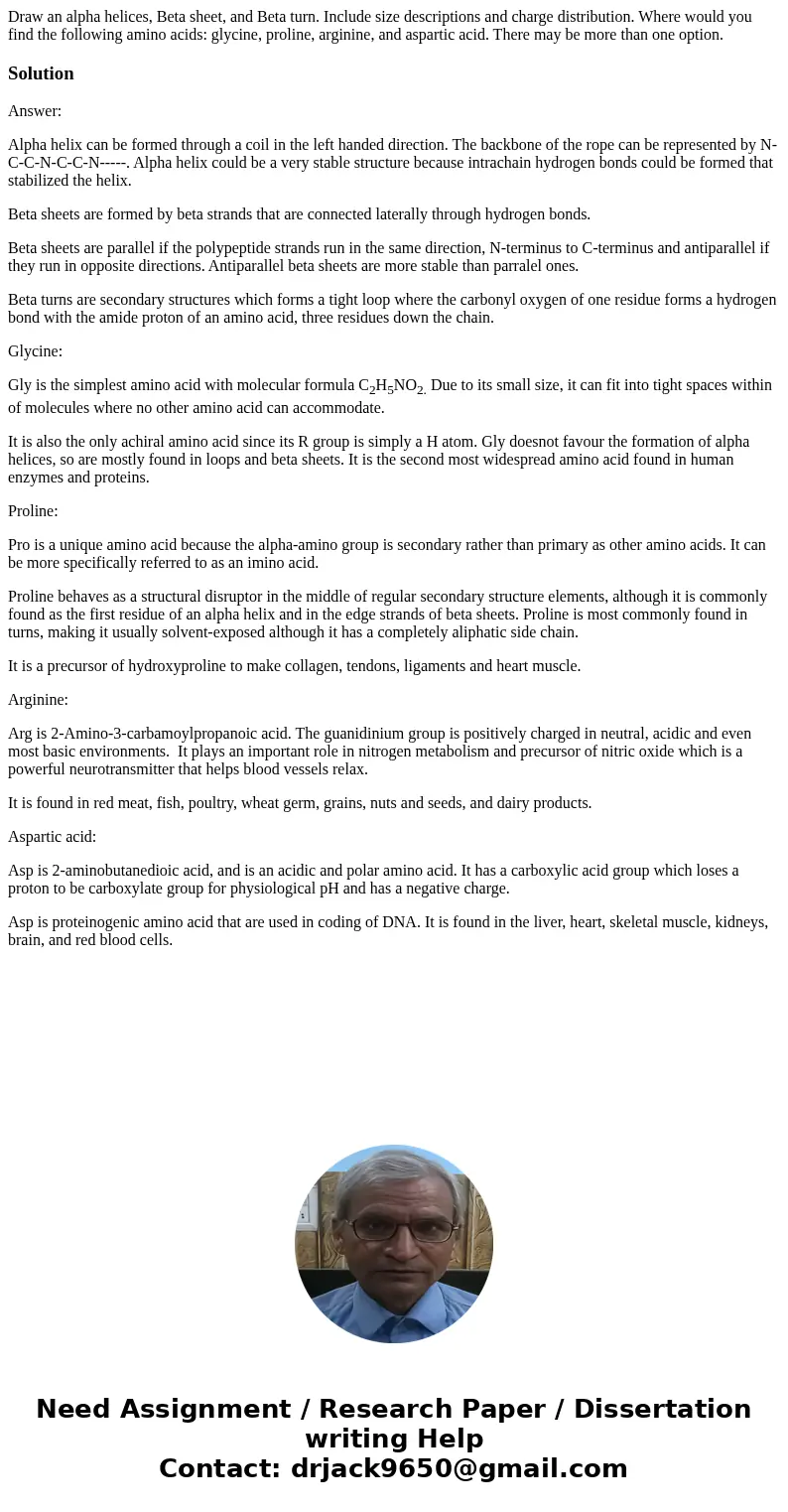Draw an alpha helices Beta sheet and Beta turn Include size
Draw an alpha helices, Beta sheet, and Beta turn. Include size descriptions and charge distribution. Where would you find the following amino acids: glycine, proline, arginine, and aspartic acid. There may be more than one option.
Solution
Answer:
Alpha helix can be formed through a coil in the left handed direction. The backbone of the rope can be represented by N-C-C-N-C-C-N-----. Alpha helix could be a very stable structure because intrachain hydrogen bonds could be formed that stabilized the helix.
Beta sheets are formed by beta strands that are connected laterally through hydrogen bonds.
Beta sheets are parallel if the polypeptide strands run in the same direction, N-terminus to C-terminus and antiparallel if they run in opposite directions. Antiparallel beta sheets are more stable than parralel ones.
Beta turns are secondary structures which forms a tight loop where the carbonyl oxygen of one residue forms a hydrogen bond with the amide proton of an amino acid, three residues down the chain.
Glycine:
Gly is the simplest amino acid with molecular formula C2H5NO2. Due to its small size, it can fit into tight spaces within of molecules where no other amino acid can accommodate.
It is also the only achiral amino acid since its R group is simply a H atom. Gly doesnot favour the formation of alpha helices, so are mostly found in loops and beta sheets. It is the second most widespread amino acid found in human enzymes and proteins.
Proline:
Pro is a unique amino acid because the alpha-amino group is secondary rather than primary as other amino acids. It can be more specifically referred to as an imino acid.
Proline behaves as a structural disruptor in the middle of regular secondary structure elements, although it is commonly found as the first residue of an alpha helix and in the edge strands of beta sheets. Proline is most commonly found in turns, making it usually solvent-exposed although it has a completely aliphatic side chain.
It is a precursor of hydroxyproline to make collagen, tendons, ligaments and heart muscle.
Arginine:
Arg is 2-Amino-3-carbamoylpropanoic acid. The guanidinium group is positively charged in neutral, acidic and even most basic environments. It plays an important role in nitrogen metabolism and precursor of nitric oxide which is a powerful neurotransmitter that helps blood vessels relax.
It is found in red meat, fish, poultry, wheat germ, grains, nuts and seeds, and dairy products.
Aspartic acid:
Asp is 2-aminobutanedioic acid, and is an acidic and polar amino acid. It has a carboxylic acid group which loses a proton to be carboxylate group for physiological pH and has a negative charge.
Asp is proteinogenic amino acid that are used in coding of DNA. It is found in the liver, heart, skeletal muscle, kidneys, brain, and red blood cells.

 Homework Sourse
Homework Sourse